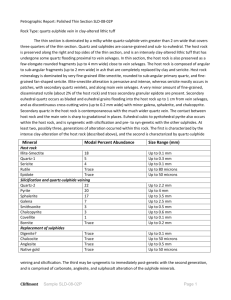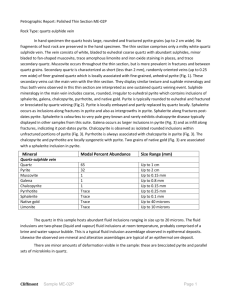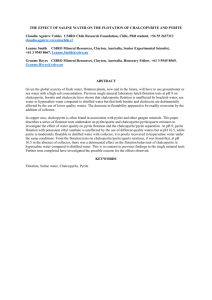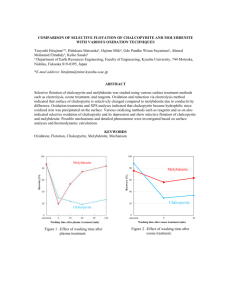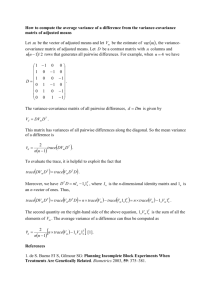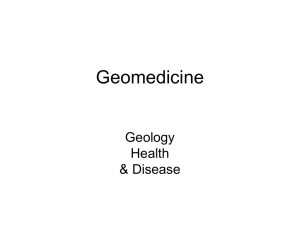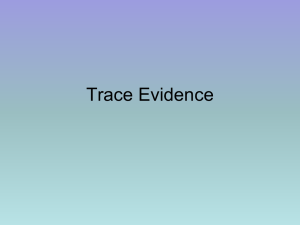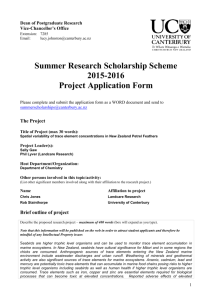ME-01P psm
advertisement
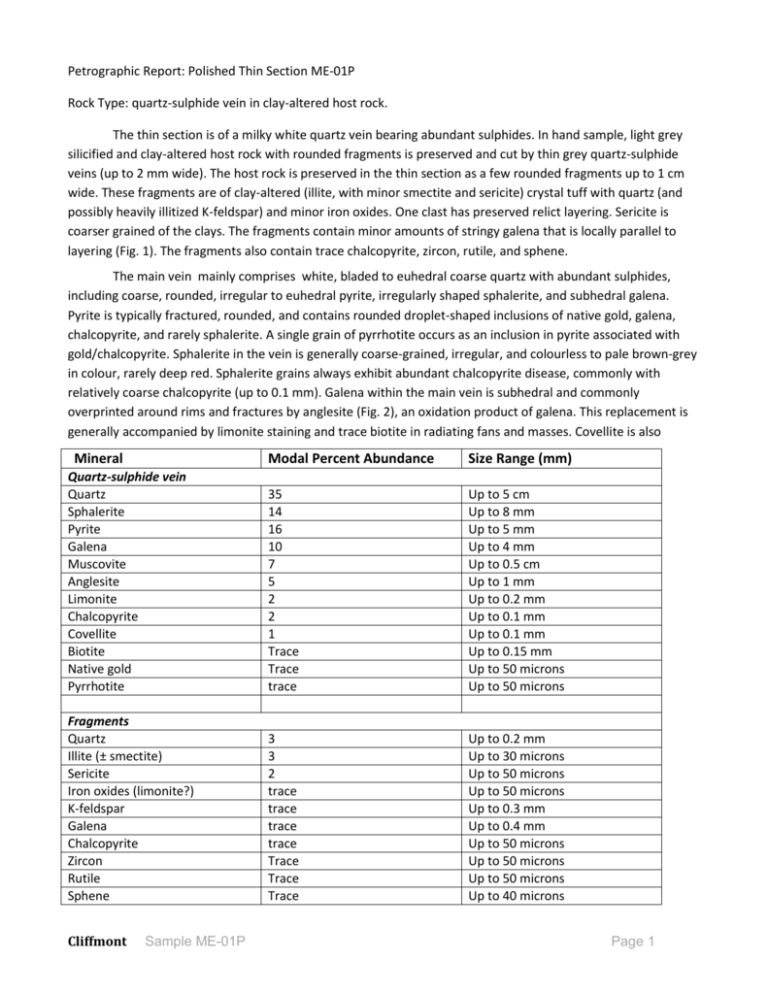
Petrographic Report: Polished Thin Section ME-01P Rock Type: quartz-sulphide vein in clay-altered host rock. The thin section is of a milky white quartz vein bearing abundant sulphides. In hand sample, light grey silicified and clay-altered host rock with rounded fragments is preserved and cut by thin grey quartz-sulphide veins (up to 2 mm wide). The host rock is preserved in the thin section as a few rounded fragments up to 1 cm wide. These fragments are of clay-altered (illite, with minor smectite and sericite) crystal tuff with quartz (and possibly heavily illitized K-feldspar) and minor iron oxides. One clast has preserved relict layering. Sericite is coarser grained of the clays. The fragments contain minor amounts of stringy galena that is locally parallel to layering (Fig. 1). The fragments also contain trace chalcopyrite, zircon, rutile, and sphene. The main vein mainly comprises white, bladed to euhedral coarse quartz with abundant sulphides, including coarse, rounded, irregular to euhedral pyrite, irregularly shaped sphalerite, and subhedral galena. Pyrite is typically fractured, rounded, and contains rounded droplet-shaped inclusions of native gold, galena, chalcopyrite, and rarely sphalerite. A single grain of pyrrhotite occurs as an inclusion in pyrite associated with gold/chalcopyrite. Sphalerite in the vein is generally coarse-grained, irregular, and colourless to pale brown-grey in colour, rarely deep red. Sphalerite grains always exhibit abundant chalcopyrite disease, commonly with relatively coarse chalcopyrite (up to 0.1 mm). Galena within the main vein is subhedral and commonly overprinted around rims and fractures by anglesite (Fig. 2), an oxidation product of galena. This replacement is generally accompanied by limonite staining and trace biotite in radiating fans and masses. Covellite is also Modal Percent Abundance Size Range (mm) Quartz-sulphide vein Quartz Sphalerite Pyrite Galena Muscovite Anglesite Limonite Chalcopyrite Covellite Biotite Native gold Pyrrhotite Mineral 35 14 16 10 7 5 2 2 1 Trace Trace trace Up to 5 cm Up to 8 mm Up to 5 mm Up to 4 mm Up to 0.5 cm Up to 1 mm Up to 0.2 mm Up to 0.1 mm Up to 0.1 mm Up to 0.15 mm Up to 50 microns Up to 50 microns Fragments Quartz Illite (± smectite) Sericite Iron oxides (limonite?) K-feldspar Galena Chalcopyrite Zircon Rutile Sphene 3 3 2 trace trace trace trace Trace Trace Trace Up to 0.2 mm Up to 30 microns Up to 50 microns Up to 50 microns Up to 0.3 mm Up to 0.4 mm Up to 50 microns Up to 50 microns Up to 50 microns Up to 40 microns Cliffmont Sample ME-01P Page 1 associated with anglesite and sphalerite as very fine disseminations throughout, but mostly along fractures and cleavages. Covellite rarely replaces sphalerite along its rims. Sulphide mineralization is cogenetic with quartz veining. py ang cpy gn po gn Figure 1: Photomicrograph of stringy galena (gn) in a preserved fragment of host rock parallel to layering. Photo taken in plane polarized reflected light. Figure 2: Photomicrograph of galena (gn) being replaced by anglesite (ang) around its rims. Pyrite (py) often contains inclusions of chalcopyrite (cpy), and this grain also includes pyrrhotite (po) associated with the chalcopyrite. Photo taken in plane polarized reflected light. Figure 3: Photomicrograph of inclusions of chalcopyrite (cpy) and native gold (au) hosted in pyrite (py). The two inclusions are optically identical and were distinguished by SEM-EDS. Photo taken in plane polarized reflected light. au py cpy Cliffmont Sample ME-01P Page 2
